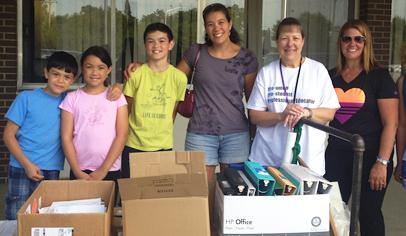How To Be an Effective PTO or PTA Volunteer Coordinator

A well-run volunteer program comes down to organization and communication.
Volunteer coordinators are a crucial link between the work that needs to be done and finding the people to do it. They help program chairs by recruiting volunteers throughout the year to support different events as well as managing the member data; they also help inform parents about volunteer opportunities and responsibilities.
As schools prepare to start a new year with lots of unknowns, it’s an especially important role to consider filling. Whether your parent group is creating the volunteer coordinator position, adding onto an existing board position, or working with the school district to manage it, your families and students can benefit more than ever from an organized and well-run volunteer program. Start with what works for your group and remember to communicate, listen, and plan ahead to the extent possible.
Join the PTO Today community (it's free) for access to resources, giveaways and more
Nuts and Bolts
Communicate with committee chairs. Learning what each committee chair’s needs are and how volunteers can help is key information to have when meeting potential volunteers, since it’ll help a coordinator match a need with a person’s interest. For example, a prospective volunteer who loves books or who is a librarian could join the book fair committee—it’s a perfect way to use her expertise to benefit the students (and keep her coming back).
Focus on organization. A group with a lot of potential volunteers and many ways for them to get involved has so much opportunity for success—but it can be daunting to keep track of all those people, committees, tasks, and dates. An online database management tool will automate the process of updating, cross-referencing, and sorting.
Support and empower chairpeople. Having a volunteer coordinator is especially helpful when recruiting committee and event chairs because it takes one major task off the chairs’ plate: identifying other parents who will help them. This is good for people who struggle with finding volunteers or soliciting help directly.
Use a variety of recruitment tools. You can help encourage and manage classroom volunteers by sharing and posting specific descriptions for jobs such as car line, class party, field trip, art project, yearbook, and kindergarten safety day coordinators. By providing details about what the job entails, volunteers know what the expectations are.
Other opportunities for that type of “soft” recruitment include making sure the student handbook, parent group website, social media channels, and bulletin boards are kept up to date with specific volunteer needs.
Coordinate with the school. Part of the volunteer coordinator’s job is to inform prospective volunteers about the school’s guidelines before they show up to do their job. It may be as simple as knowing they need to have identification every time they enter the school, or it may require an application process that gets completed weeks in advance.
“The PTA makes sure all our volunteers know they have to be on the approved list of volunteers, and we share the process on our flyers, website, and on our Twitter and Facebook pages,” says former DeBary (Fla.) Elementary PTA president Jennifer Baylor. “It can take one to two days for the applications to be approved, and the new volunteers need to have their driver’s license scanned at the school the first time they visit.”
What To Share With Potential Volunteers
Be specific about the help that’s needed. Create a detailed sign-up form for each volunteer need—for example, three volunteers for each of three two-hour shifts. An online sign-up form is most efficient.
Create a “general volunteer” option to collect a ready group of volunteers you can contact when opportunities or needs come up.
Let members know you’ve received their input through a group text or email; include a general thank-you message such as “Thanks for volunteering for the fall carnival on Oct. 20!” or “We received your info and will follow up closer to the event with specific times that help is needed.”
Speak positively to your parent group members and potential volunteers; remember that some may have limitations to what they can and can’t do to help.
Be aware of your needs and share them in a positive way to help excite and motivate new members to get involved.
A Breakdown of Common Duties
Communication
-
Meet with school leaders (principals, teachers, librarians) and PTO committee chairs to determine their volunteer needs.
-
Serve as the liaison between the school and community, promoting ways to get involved and how to help.
-
Promote volunteer opportunities widely.
-
Forward lists of volunteers by activity or event and share with committee and event chairpeople when they need the information.
-
Share volunteer openings with board and general PTA members so they can let others know. This is especially helpful when caught off-guard, such as at the grocery store when a neighbor says, “I’d like to get involved but don’t know what I could do.”
Recruitment
-
Determine the best way to recruit volunteers inside and outside of school.
-
Thank volunteers throughout the year.
-
Prepare detailed job descriptions for volunteers so they know what is expected of them.
-
Keep a set of volunteer guidelines in the school office and on your website to send to new families who join the school throughout the year.
-
Make volunteer opportunities visible on websites, social medial channels, and bulletin boards.
Organization
-
Organize volunteer needs in a database, being specific about number needed, dates and times, and duties to be fulfilled.
-
Develop a master calendar of volunteer needs.
-
Use online tools to manage and solicit volunteers.
-
Keep a list of volunteers from year to year to allow for easy follow-up.
Originally posted in 2016 and updated regularly.






















